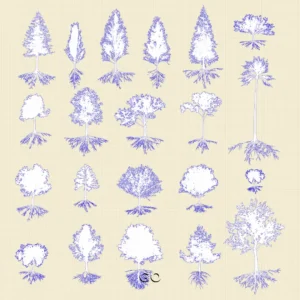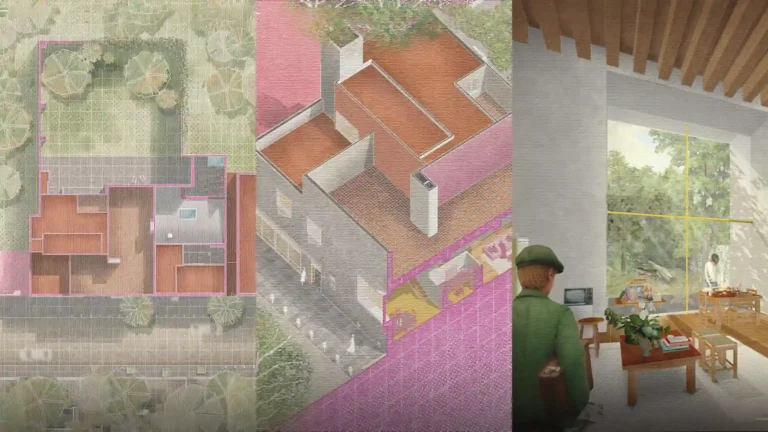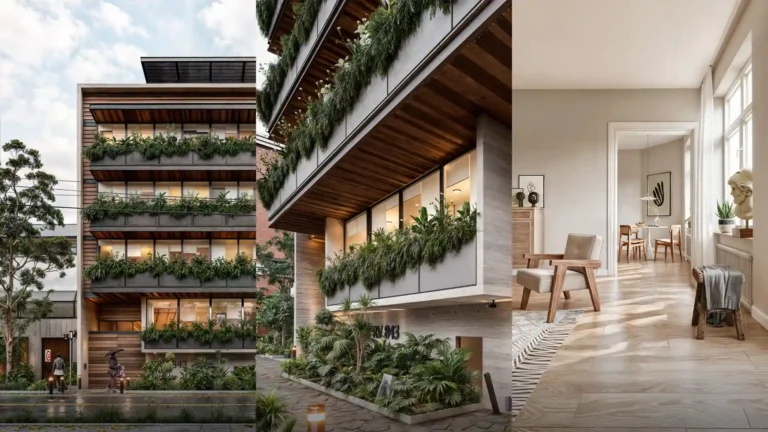Amphibious Landscape / TAP – EMS
Related posts

- Architect: TAP, EMS
- Location: Santander, Colombia
- Project: Hospitality architecture
- Software: Archicad, Illustrator, Photoshop, Lumion, Sketchup
- Juan José Vargas Castillo Paulo Escruceria Susana Ospina Giraldo Jhorman Cadenas Montaño Liseth Carolina Ramirez Cañón Daniel Arboleda Zapata Penélope Silva Valqui Alejandro Montaña Posada Erika Lorena Chavarro Chacón Andrea Escobar Parra Paulina López Gómez
“Amphibious Landscape: Restoring Water Memory in Sogamoso” “Water is for life, not for death.” This premise, echoing in the idiosyncrasy of Sogamoso, has lost its harmony with the arrival of Hidro Sogamoso and the dynamic alterations in the region. Situated between the central and eastern mountain ranges, in the Serranía de la Paz, the project unfolds in a territory marked by two distinct seasons: dry and wet. Each of these seasons shapes a unique narrative that defines the territory and its relationship with water.

Despite its challenging geographical location, water has been a central player in the development of the local community. It is the sustenance, the facilitator, the abundant giver that has allowed locals to shape their lives in harmony with its dynamics. The project, named “Amphibious Landscape,” aspires to reclaim the memory of the ancient river dynamics, where water has gradually lost importance despite the presence of a reservoir. To counteract this trend, the project aims to bring water indoors, capitalizing on the regular rainfall in the area. Through runoff generated by rainfall, ecosystem regeneration is promoted, creating zones of life.

Amphibious Landscape: Integration of Water, Person, and Landscape: The project stands as an environment where the user’s experience is present in every corner, from panoramic views to the places they tread. It focuses on highlighting the elements that make this place unique. Landscape: The proposal seeks to articulate and respect the current dynamics of the location, establishing a dialogue between the present and the future. A central biotic corridor distributes environmental dynamics to the two ravines that border the lot. In addition, biotic islands are created to harmonize with the architectural program, seeking a balance between nature and humanity.

Circuits: The project proposes a main circuit as the central articulator of the program, serving as the main axis of movement. This gives rise to secondary circuits that connect architectural spaces, along with tertiary paths designed for immersion and more secluded experiences. Program: Two strategies link the program: the main circuit, connecting the entire tourist park, and the secondary circuit, serving as nuclei for uses, allowing hybridization and flexibility for future constructions. The program’s location is planned in harmony with the topography of the terrain. Conclusions: “Amphibious Landscape” is not just an architectural project; it is an effort to restore the lost relationship with water, rescue collective memory, and promote a sustainable balance between nature and the community. This project represents the possibility of recovering Sogamoso’s essence and preserving it for future generations.
Project gallery
Material
Glass, stone, wood
#tags
Related posts
Recommended courses
Essential resources
-
Sale!

Pay 2 Take 4
$ 20,00Original price was: $ 20,00.$ 10,00Current price is: $ 10,00. Add to cart -
Sale!

Pot plant cut outs
$ 10,00Original price was: $ 10,00.$ 5,00Current price is: $ 5,00. Add to cart -
Sale!

Trees Roots – GO
$ 10,00Original price was: $ 10,00.$ 5,00Current price is: $ 5,00. Add to cart -
Sale!

Site Analysis GO
$ 10,00Original price was: $ 10,00.$ 5,00Current price is: $ 5,00. Add to cart
Recommended Courses
Essential resources
-
Sale!

Pay 2 Take 4
$ 20,00Original price was: $ 20,00.$ 10,00Current price is: $ 10,00. Add to cart -
Sale!

Pot plant cut outs
$ 10,00Original price was: $ 10,00.$ 5,00Current price is: $ 5,00. Add to cart -
Sale!

Trees Roots – GO
$ 10,00Original price was: $ 10,00.$ 5,00Current price is: $ 5,00. Add to cart -
Sale!

Site Analysis GO
$ 10,00Original price was: $ 10,00.$ 5,00Current price is: $ 5,00. Add to cart -
Sale!

32 PATTERNS – GO
$ 10,00Original price was: $ 10,00.$ 5,00Current price is: $ 5,00. Add to cart -
Sale!

Colorful people
$ 10,00Original price was: $ 10,00.$ 5,00Current price is: $ 5,00. Add to cart -
Sale!

CARTOON TREES
$ 6,00Original price was: $ 6,00.$ 3,00Current price is: $ 3,00. Add to cart -
Sale!

URBAN ISOMETRIC MEGAPACK
$ 10,00Original price was: $ 10,00.$ 5,00Current price is: $ 5,00. Add to cart














